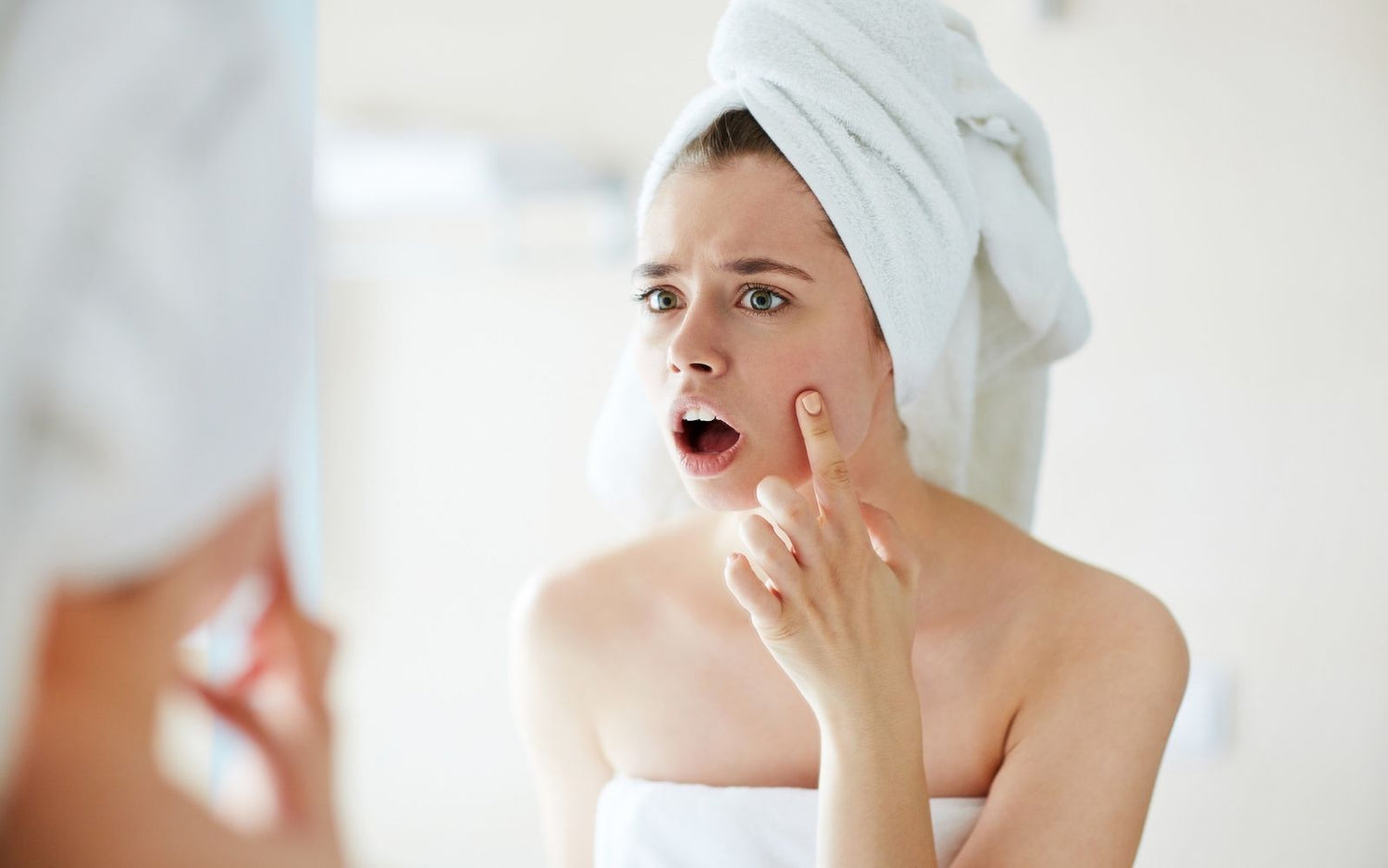
Which Type Of Acne Do You Have?
Learn about the different types of acne so you know what you’re experiencing—and how to treat it.
Which type of acne do you have?
It’s safe to say that everyone has experienced at least one pimple in their life—but all acne breakouts are not created equal. In fact, there are different types of acne blemishes, and while some many only get one, others can experience all of them. The types of pimples you develop can dictate the best acne treatment for your skin, whether you only breakout occasionally, struggle with pimples every day or experience breakouts of severe acne.

Blackheads
A comedone is the technical name for a pore that has become clogged with oil, dead skin cells and bacteria. A blackhead is also known as an open comedone, and this means the pore is open at the surface of the skin. Blackheads most commonly form on and around the nose and outward to the cheeks. Contrary to popular belief, the color of blackheads isn’t due to dirt. It is actually caused when oil and debris in the pore darken as they react with oxygen in the air.
The best way to prevent and get rid of blackheads is to keep pores clear by using salicylic acid products that help exfoliate dead skin cells. Skin-caring ingredients such as charcoal help draw impurities out of the pores, which can help minimize blackheads as well. If you’re prone to blackheads, it’s best to use these products over the entire face (rather than spot treating) to promote clear skin—and a scrub is a great way to get rid of blackheads fast.

Whiteheads
Whiteheads are another type of comedone. Unlike blackheads that are open, whiteheads occur when oil, dead skin cells and bacteria prevent the pore from opening—and they can appear on the face, neck, shoulders, chest and back. The ideal way to prevent and treat whiteheads is to use salicylic acid to minimize the dead skin cells than can cause clogged pores. Although it may be tempting to squeeze whiteheads, it’s best to keep your hands off to prevent spreading bacteria and potential damage to the skin.
Papules
When comedones (blackheads or whiteheads) become red and inflamed, they are called papules. They usually feel firm and can feel sore or tender to the touch as well. Papules form when irritation causes the walls of the pores to break, which leads to inflammation surrounding the pore. Salicylic acid is an effective ingredient for preventing the clogged pores that lead to papules, but this type of acne may also need benzoyl peroxide or a sulfur acne treatment to minimize their formation. A benzoyl peroxide spot treatment can help clear occasional papules, but an acne kit that includes a cleanser, toner and acne lotion may be best if you’re constantly dealing with papules. As with blackheads and whiteheads (and all types of acne), picking or squeezing can make inflammation worse and lead to scarring.

Pustules
The acne you would usually call a “pimple” is technically called a pustule. A pustule is a papule that becomes filled with pus made of dead white blood cells that the body sends to fight infection. Pustules may look like whiteheads, but they are surrounded by redness and are usually accompanied by soreness. To get rid of acne pustules, it’s important to use potent acne-fighting ingredients like salicylic acid, benzoyl peroxide and sulfur consistently—along with skin-soothing ingredients like aloe vera and witch hazel to reduce irritation.
Nodules
Nodules are a form of severe acne, and these are large, hard, inflamed bumps that form deep within the skin. Some nodules may have red bumps on the skin’s surface while others remain the same color as the surrounding skin. Nodules are similar to papules but the infection spreads deeper into the skin, and this type of acne is common on the back and shoulders as well. Nodules are more likely to leave scars after they are healed, and they require maximum strength acne treatment, ideally in the form of a full skincare regimen designed specifically for severe acne. If nodules persist after using an over-the-counter acne regimen, it’s time to seek the help of a dermatologist.

Cysts
Cysts are another type of severe acne. These are deep, painful bumps like nodules except they are filled with pus. Ranging from the size of a pencil eraser to much larger, cysts are prone to scarring, especially if they are picked or squeezed. A regimen that includes maximum strength benzoyl peroxide, salicylic acid and sulfur can help control cysts, but if they continue to be a problem it’s best to make an appointment with a dermatologist.
The key to successfully treating and clearing all types of acne is consistent use of proven, dermatologist-recommended ingredients. And remember… Acne treatments don’t work if they stay in the bottle!
Products
View all

